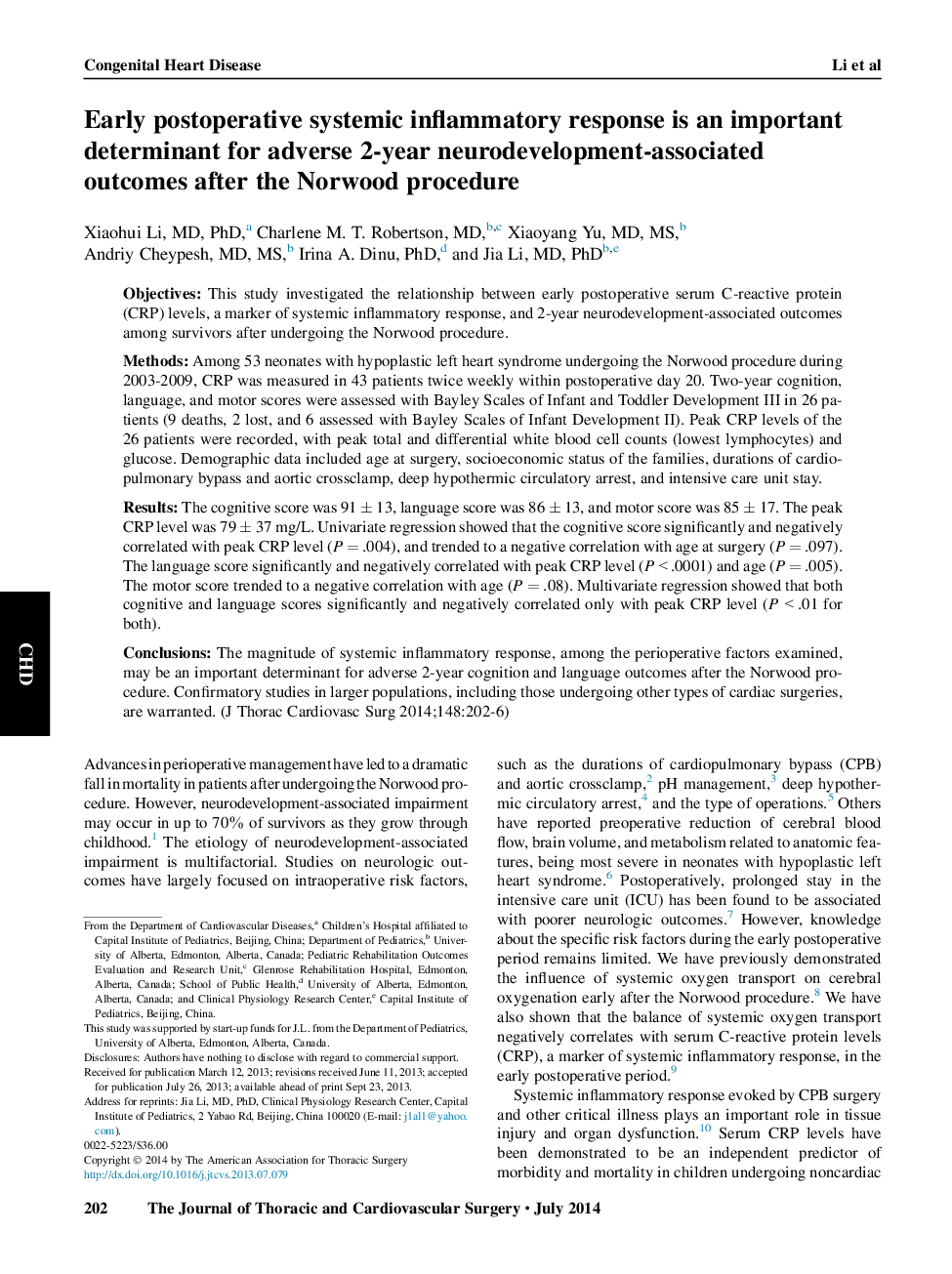| Article ID | Journal | Published Year | Pages | File Type |
|---|---|---|---|---|
| 2980766 | The Journal of Thoracic and Cardiovascular Surgery | 2014 | 5 Pages |
ObjectivesThis study investigated the relationship between early postoperative serum C-reactive protein (CRP) levels, a marker of systemic inflammatory response, and 2-year neurodevelopment-associated outcomes among survivors after undergoing the Norwood procedure.MethodsAmong 53 neonates with hypoplastic left heart syndrome undergoing the Norwood procedure during 2003-2009, CRP was measured in 43 patients twice weekly within postoperative day 20. Two-year cognition, language, and motor scores were assessed with Bayley Scales of Infant and Toddler Development III in 26 patients (9 deaths, 2 lost, and 6 assessed with Bayley Scales of Infant Development II). Peak CRP levels of the 26 patients were recorded, with peak total and differential white blood cell counts (lowest lymphocytes) and glucose. Demographic data included age at surgery, socioeconomic status of the families, durations of cardiopulmonary bypass and aortic crossclamp, deep hypothermic circulatory arrest, and intensive care unit stay.ResultsThe cognitive score was 91 ± 13, language score was 86 ± 13, and motor score was 85 ± 17. The peak CRP level was 79 ± 37 mg/L. Univariate regression showed that the cognitive score significantly and negatively correlated with peak CRP level (P = .004), and trended to a negative correlation with age at surgery (P = .097). The language score significantly and negatively correlated with peak CRP level (P < .0001) and age (P = .005). The motor score trended to a negative correlation with age (P = .08). Multivariate regression showed that both cognitive and language scores significantly and negatively correlated only with peak CRP level (P < .01 for both).ConclusionsThe magnitude of systemic inflammatory response, among the perioperative factors examined, may be an important determinant for adverse 2-year cognition and language outcomes after the Norwood procedure. Confirmatory studies in larger populations, including those undergoing other types of cardiac surgeries, are warranted.
